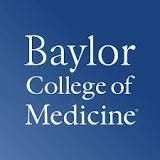预约演示
更新于:2025-03-20
Hookworm vaccine(Albert B. Sabin Vaccine Institute, Inc.)
更新于:2025-03-20
概要
基本信息
在研机构- |
最高研发阶段无进展临床1期 |
首次获批日期- |
最高研发阶段(中国)- |
特殊审评- |
登录后查看时间轴
关联
1
项与 Hookworm vaccine(Albert B. Sabin Vaccine Institute, Inc.) 相关的临床试验NCT02476773
Phase 1 Study of the Safety and Immunogenicity of Na-APR-1 (M74)/Alhydrogel® Co-administered With Na-GST-1/Alhydrogel® in Brazilian Adults
Na-GST-1 and Na-APR-1 are proteins expressed during the adult stage of the Necator americanus hookworm life cycle that are thought to play a role in the parasite's degradation of host hemoglobin for use as an energy source. Vaccination wtih recombinant GST-1 or APR-1 has protected dogs and hamsters from infection in challenge studies. This study will evaluate the safety and immunogenicity of co-administering Na-GST-1 and Na-APR-1 to healthy Brazilian adults living in an area of endemic hookworm infection.
开始日期2016-01-01 |
申办/合作机构 |
100 项与 Hookworm vaccine(Albert B. Sabin Vaccine Institute, Inc.) 相关的临床结果
登录后查看更多信息
100 项与 Hookworm vaccine(Albert B. Sabin Vaccine Institute, Inc.) 相关的转化医学
登录后查看更多信息
100 项与 Hookworm vaccine(Albert B. Sabin Vaccine Institute, Inc.) 相关的专利(医药)
登录后查看更多信息
63
项与 Hookworm vaccine(Albert B. Sabin Vaccine Institute, Inc.) 相关的文献(医药)2024-07-01·Vaccine
Vaccine value profile for Hookworm
Article
作者: Periago, Victoria ; Gaspari, Erika ; Puchner, Karl Philipp ; Grobusch, Martin ; Lee, Bruce ; McCarthy, James ; Diemert, David ; Bottazzi, Maria Elena ; Hotez, Peter ; Maizels, Rick
2023-12-01·The Lancet Microbe
Protective efficacy of short-term infection with Necator americanus hookworm larvae in healthy volunteers in the Netherlands: a single-centre, placebo-controlled, randomised, controlled, phase 1 trial
Article
作者: Jochems, Simon P ; Kuiper, Vincent P ; Kruize, Yvonne Cm ; van Lieshout, Lisette ; Sijtsma, Jeroen C ; Roestenberg, Meta ; Visser, Leo G ; Yazdanbakhsh, Maria ; Meij, Pauline ; Hoogerwerf, Marie-Astrid ; Brienen, Eric At ; Nosoh, Beckley A ; van Schuijlenburg, Roos ; Koopman, Jan-Pieter R ; Verbeek-Menken, Petra H ; Westra, Inge M ; Janse, Jacqueline J
2023-03-01·Acta Tropica
Soil-transmitted helminthic vaccines: Where are we now?
Review
作者: Tye, Gee Jun ; Wong, Matthew Tze Jian ; Noordin, Rahmah ; Anuar, Nor Suhada
100 项与 Hookworm vaccine(Albert B. Sabin Vaccine Institute, Inc.) 相关的药物交易
登录后查看更多信息
外链
| KEGG | Wiki | ATC | Drug Bank |
|---|---|---|---|
| - | Hookworm vaccine(Albert B. Sabin Vaccine Institute, Inc.) | - | - |
研发状态
10 条进展最快的记录, 后查看更多信息
登录
| 适应症 | 最高研发状态 | 国家/地区 | 公司 | 日期 |
|---|---|---|---|---|
| 钩虫感染 | 临床1期 | 美国 | - |
登录后查看更多信息
临床结果
临床结果
适应症
分期
评价
查看全部结果
| 研究 | 分期 | 人群特征 | 评价人数 | 分组 | 结果 | 评价 | 发布日期 |
|---|
No Data | |||||||
登录后查看更多信息
转化医学
使用我们的转化医学数据加速您的研究。
登录
或

药物交易
使用我们的药物交易数据加速您的研究。
登录
或

核心专利
使用我们的核心专利数据促进您的研究。
登录
或

临床分析
紧跟全球注册中心的最新临床试验。
登录
或

批准
利用最新的监管批准信息加速您的研究。
登录
或

特殊审评
只需点击几下即可了解关键药物信息。
登录
或

来和芽仔聊天吧
立即开始免费试用!
智慧芽新药情报库是智慧芽专为生命科学人士构建的基于AI的创新药情报平台,助您全方位提升您的研发与决策效率。
立即开始数据试用!
智慧芽新药库数据也通过智慧芽数据服务平台,以API或者数据包形式对外开放,助您更加充分利用智慧芽新药情报信息。
生物序列数据库
生物药研发创新
免费使用
化学结构数据库
小分子化药研发创新
免费使用

